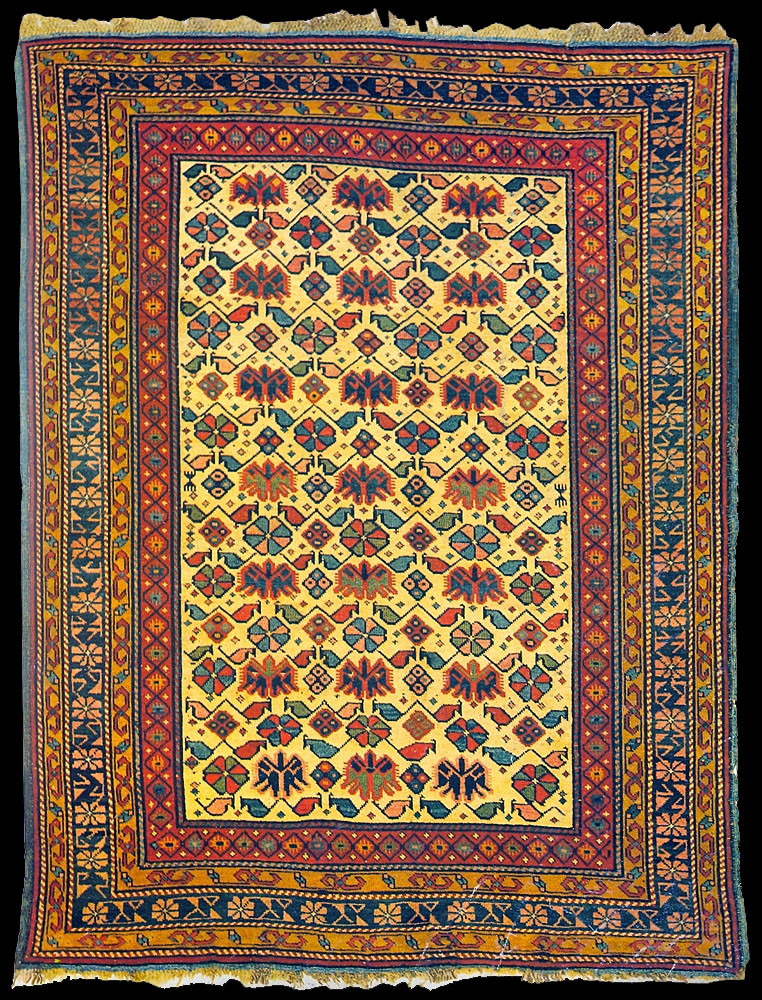|
 |
Antique Caucasian Kuba rug, Azerbaijan, 19th
century.
Ian Bennett's Oriental Rugs Volume I,
plate 358
Here, the composition of the alternate
open octagon and palmette rows is more diffused, and even the palmettes,
which have been defined as highly stylised bird figures by some authors,
are different. The piece has a border system perhaps more typical of
Shirvan rugs, an all-wool foundation and blue overcast sides. An
attribution to Chichi is doubtful and Peter Bausback, in his 1975
catalogue, illustrated a piece (p. 145) with a very
similar field design but a leaf-and-calyx border and cotton wefts, which
he catalogued as Shirvan; certain structural features of the present
piece, notably the blue sides and ribbed back, are traditionally held to
indicate northern origin, but in appearance, an attribution to Shirvan
makes more sense. Possibly first half 19th century. 153 x 94 cm (Lit: Ian
Bennett's Oriental Rugs Volume I, p.358)
Note: Everything is about this rug is Kuba,
from the design of the central field to the central, minor and inner
border types, from the selvedge to the fringe. That is doubtless. I felt
the urge to express my opinion here. The origin is one of the neighboring
villages of Chichi, but more to the north-west. (VD) |

